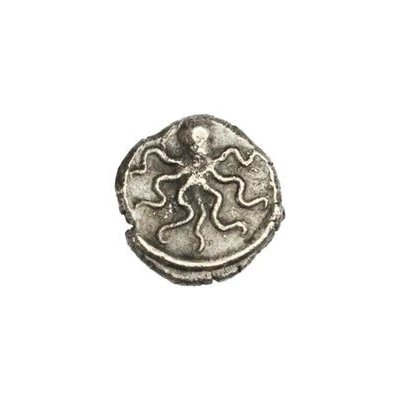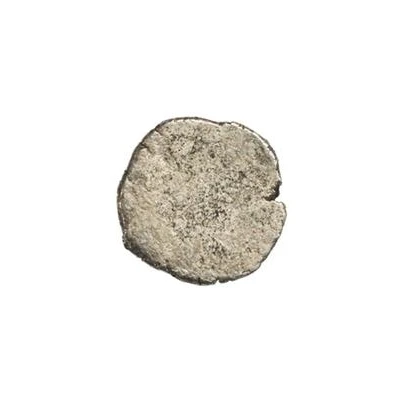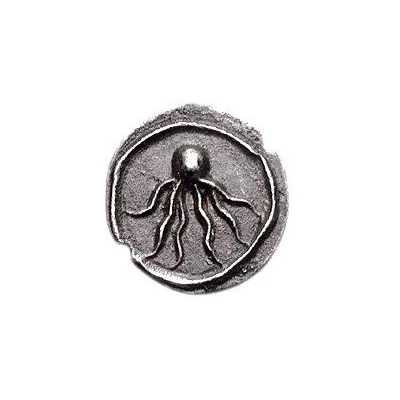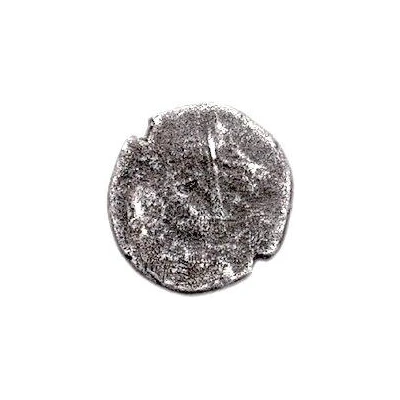


© Spink and Son
Silver 1 As Octopus series: seven tentacles 450 BC - 401 BC
| Silver | 0.84 g | 10 mm |
| Issuer | Populonia (Etruria) |
|---|---|
| Type | Standard circulation coin |
| Years | 450 BC - 401 BC |
| Value | 1 As |
| Currency | As (circa 475-201 BC) |
| Composition | Silver |
| Weight | 0.84 g |
| Diameter | 10 mm |
| Shape | Round (irregular) |
| Technique | Hammered |
| Demonetized | Yes |
| Updated | 2024-10-09 |
| Numista | N#178554 |
|---|---|
| Rarity index | 100% |
Reverse
Blank (uniface).
Edge
Plain
Comment
The Amphora / Octopus series coinage were first attributed to Pisae; however, there has been no evidence this type was found in or around that area. The attribution was decided solely based on how the Greek name for octopus sounds similar to the name of the first inhabitants of Pisae (Teuthìs or Teuthòs / Teuta-Teutones). New evidence points to the Amphora / Octopus series fitting in with the coins of Populonia.There has been much controversy on dating Populonian coins, and as such, the date ranges my vary per source.
The Ampora / Octopus series was struck using Populonia's second silver standard, which is equal to the first silver standard except with the weights of all denomination being halved.
Interesting fact
The Octopus series of coins, which includes the Silver 1 As coin from Populonia (Etruria), is considered one of the earliest examples of a standardized coinage system in the ancient world. The use of a consistent design and weight across the series, which featured an octopus on one side and a seven-tentacled creature on the other, helped to establish trust and facilitate trade across the region. This innovation in coinage played a significant role in the economic development of the ancient civilizations of Etruria and beyond.

